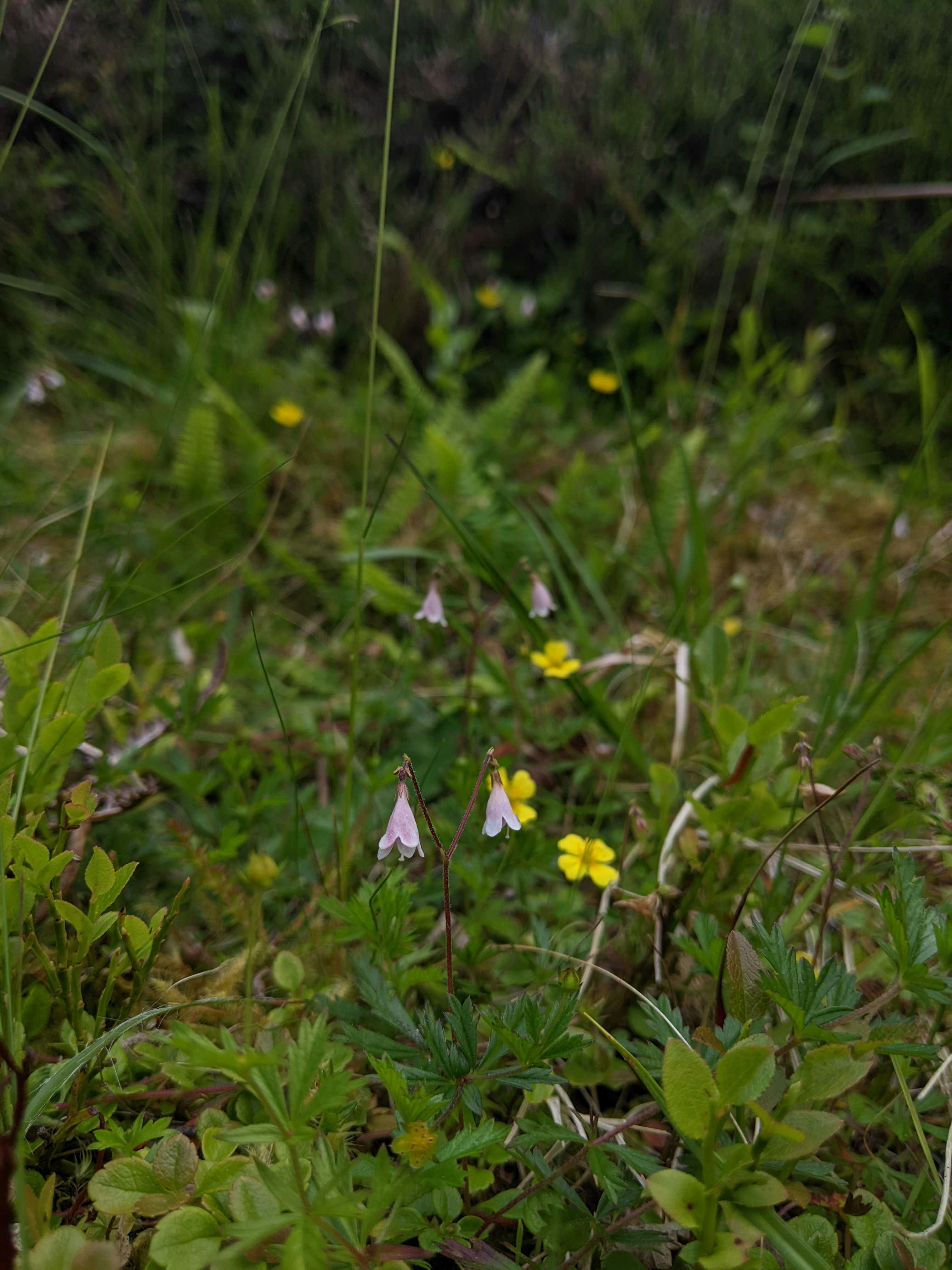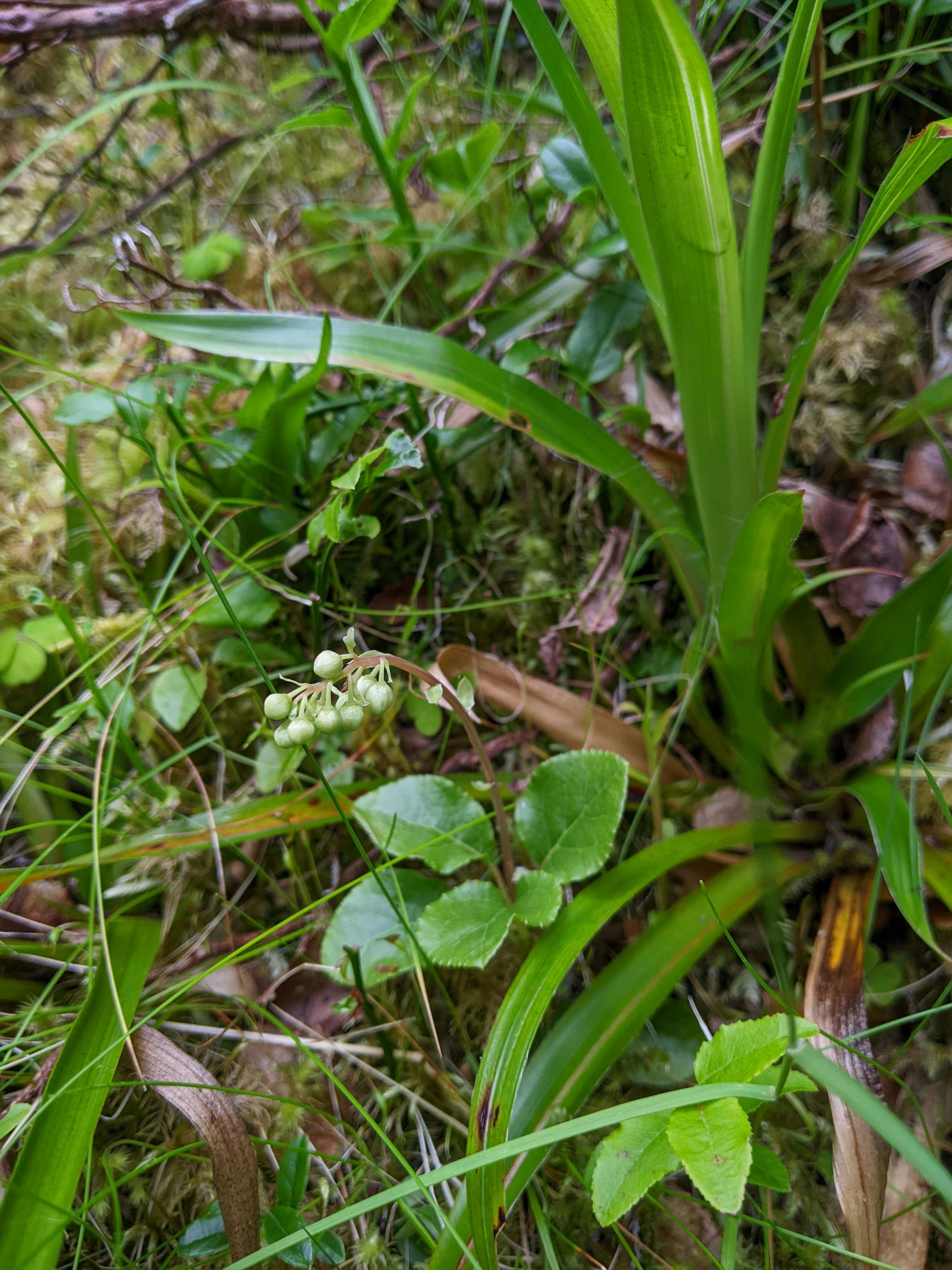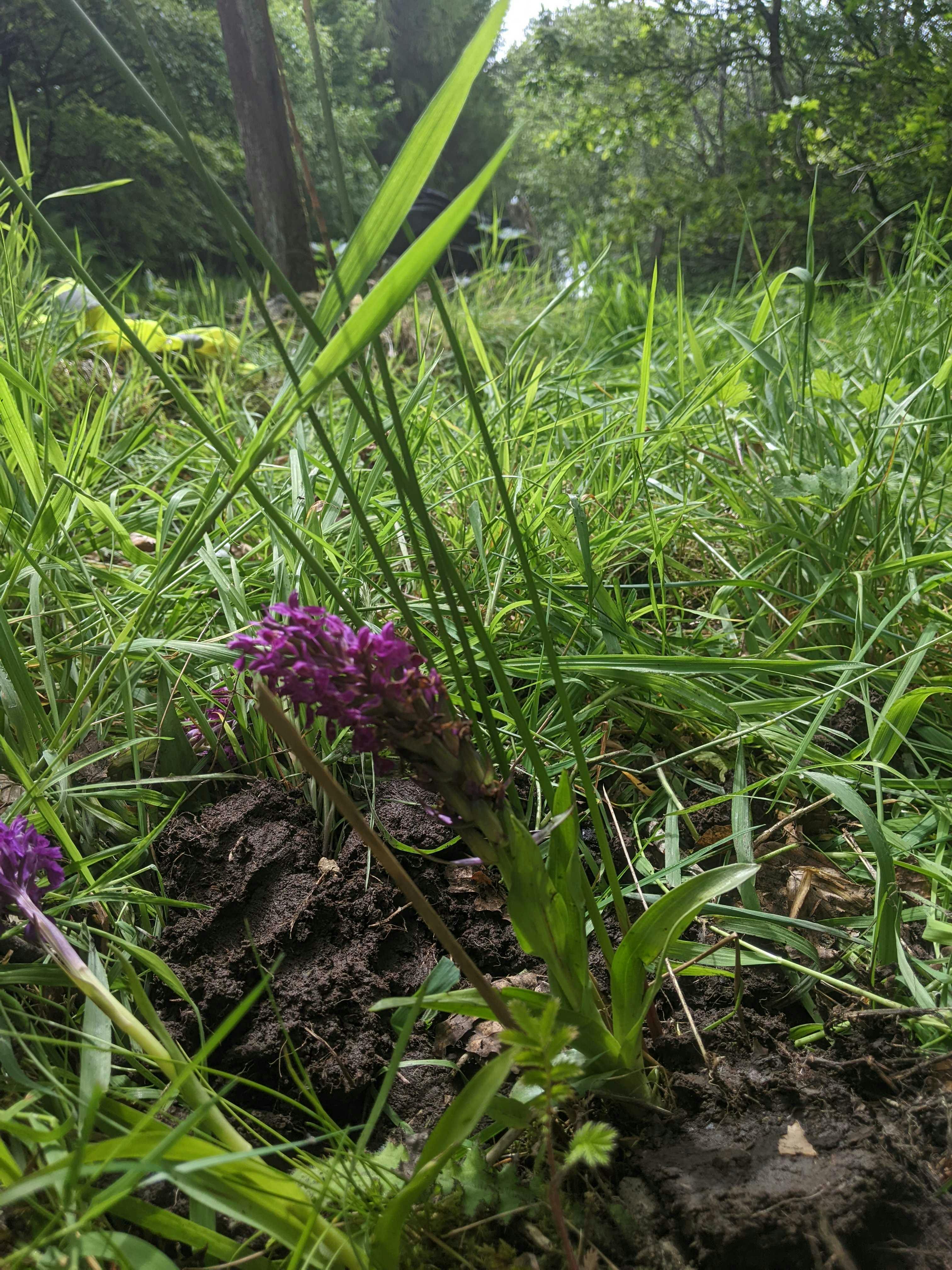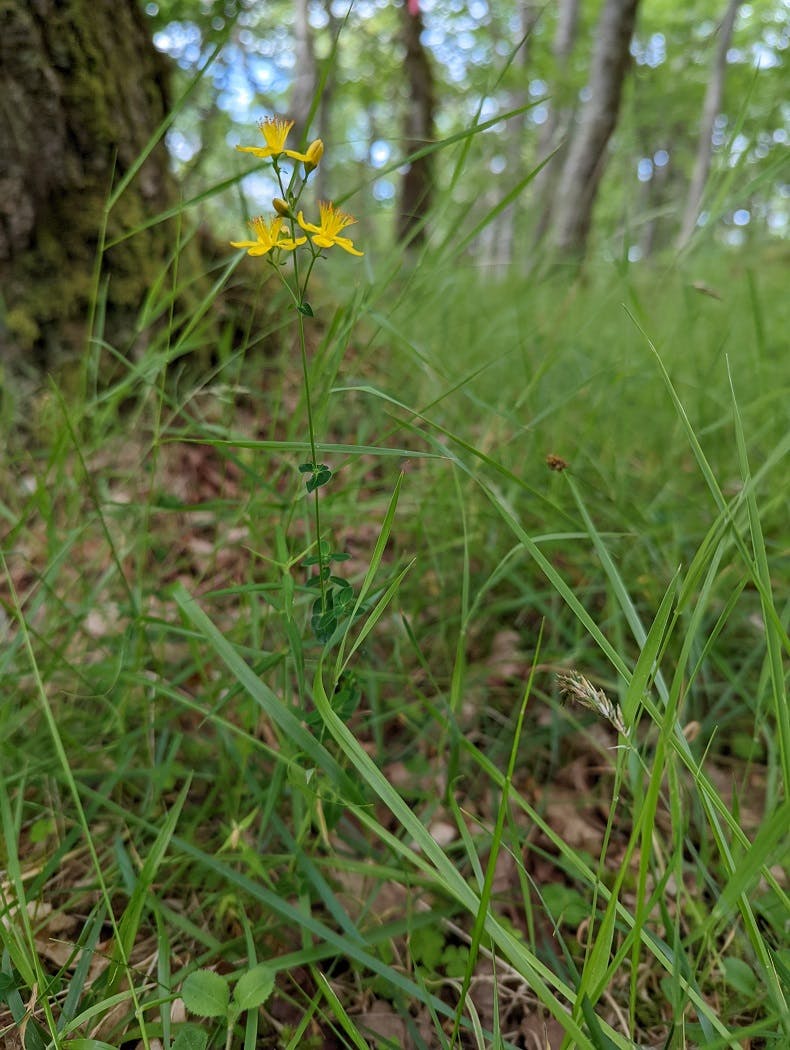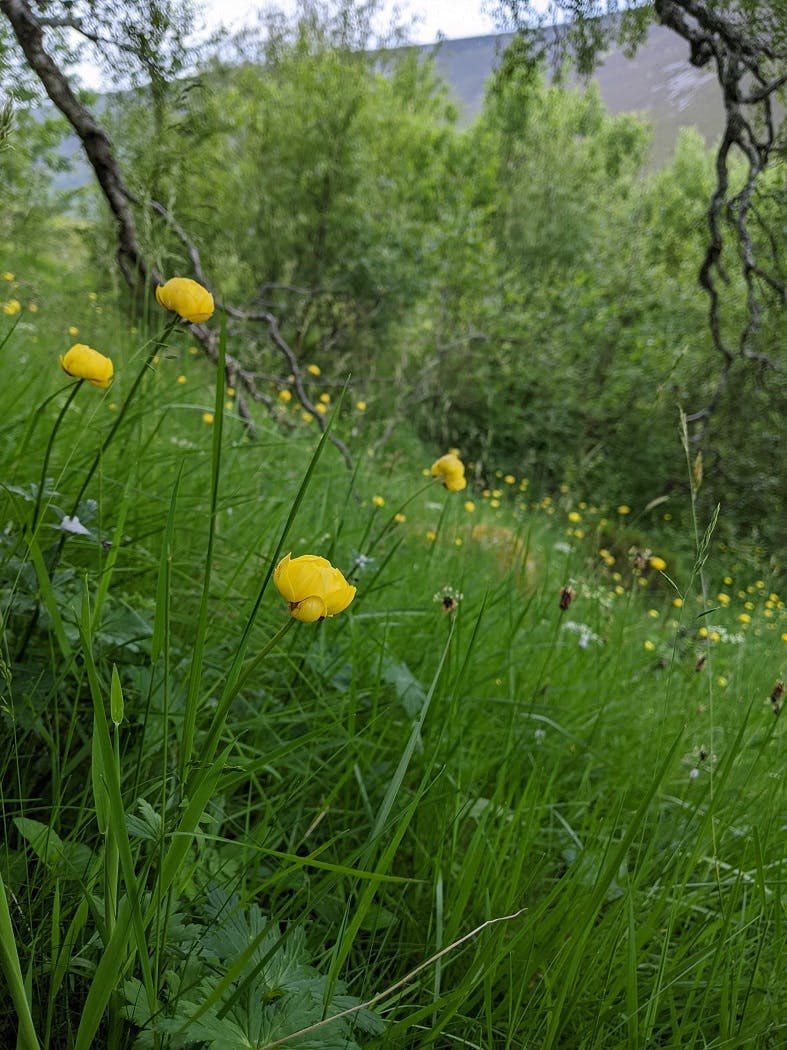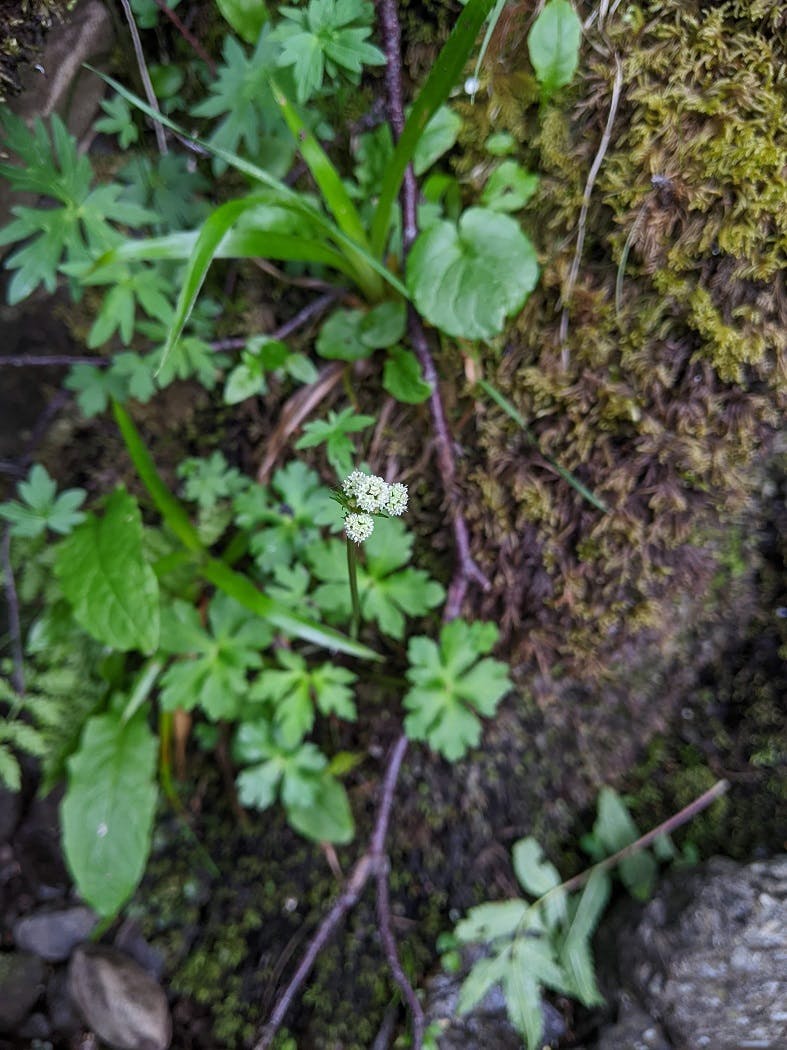- Budget spent: £9,311
- Status: Post-Implementation Monitoring
Woodland restoration is happening at astonishing rates in Scotland to protect native species of conservation concern like the red squirrel, pine marten and capercaillie. However, one area that is being largely ignored, is the understory. A healthy woodland in Scotland is carpeted in shrubs, wildflowers, mosses and fungi. While we have given woodlands a helping hand by bringing native trees back to the landscape, some understory species are slow or entirely unable to recolonize. This 4-year-long project aims to restore a rich, resilient woodland habitat with a healthy understory at 3 different sites in Scotland.
Project Timeline
Winter 2024/25
Removal of old planting infrastructure at a new enrichment planting site. Planting of understory species at Locherwoods and North Hourat involving communities groups, including Star Project and the local SWT volunteer group at North Hourat.
Summer - Autumn 2024
Planting of Red Campion, Dog Violet, Foxglove, Juniper, Holly, and Wood Anemone Rhyzomes as well as some direct sowing of Bluebell seeds at Locherwood Community Woodland. A total of 1,042 wildflowers were planted between June and November (see gallery below).
Branching out across 3 unique sites
For this project, we are spreading our impact over 3 interestingly different sites with their own individual stories of land use. From a wind farm, a former WW2 explosive factory to a popular dog walker’s trial, all the sites share the common goal of developing richer, more resilient native woodland habitats for local species to flourish alongside people.
To help achieve this, we are pleased to be partnering with Eadha Enterprises, a community-based enterprise, to support the rewilding of the following 3 woodlands in Scotland:
- Locherwood Community Woodland, Renfrewshire
- Wardlaw Wood, Dalry Community Windfarm
- A regenerating woodland in Bishopton
This will be done through enrichment planting of shrubs and wildflowers; planting of thorny shrubs to protect existing growing trees against deer browsing; and by removing old tree guards that pose various threats including plastic pollution.
Our interventions form part of the wider woodland restoration initiative carried out by Eadha Enterprises for the rewilding project called Yearn Stane.
Locherwood Community Woodland and a regenerating woodland in Bishopton
Both these sites are planted native woodland currently missing important understory and ground flora species. Without these layers of vegetation, the woodlands are more exposed and less resilient to threats such as the impacts of overuse, air pollution and climate change. This has left ground species at risk of hybridisation where aggressive species outcompete and hybridise ancient native species, like bluebell, diluting their characteristics forever. To compound this, trampling, grazing and invasive species (e.g rhododendron) are also depleting the ground flora.
At Locherwood Community Woodlands, a 14 hectare planted broadleaf community woodland, most of the planted trees still have protective guards that should have been removed. These plastic tubes pose a risk in the way of restricting the trees’ growth or survival, causing rot by trapping moisture and micro-plastic pollution as the guards break down over time.
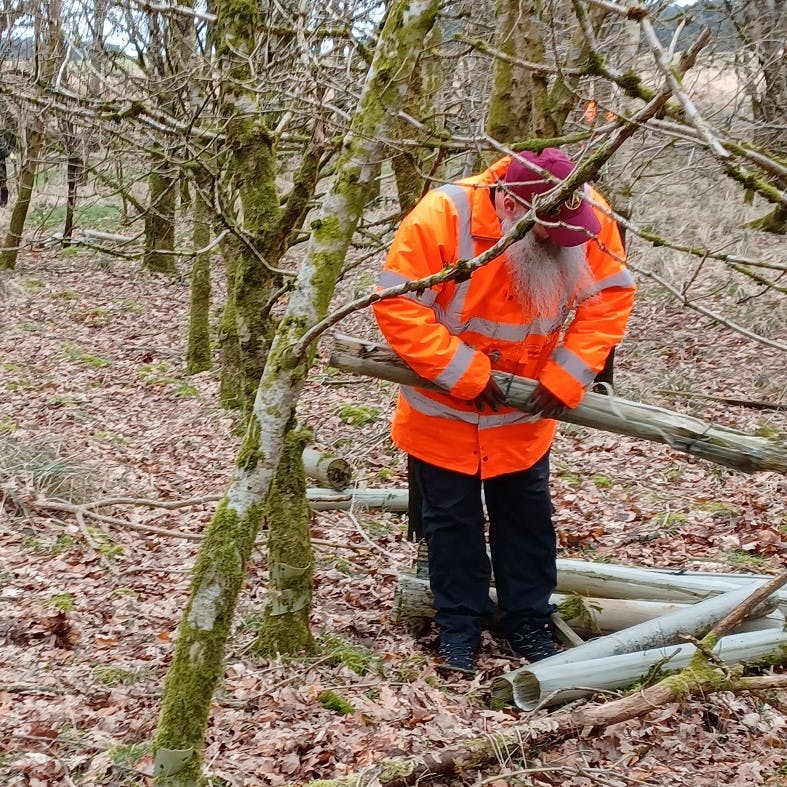
Our Intervention
One of the main objectives of this project is therefore, to remove all of these plastic tubes from the tree trunks. Our partners, Eadha, are organising a team of volunteers to complete the work for which Mossy Earth members are funding the event’s expenses.
The other main objective at both Locherwood Community Woodland and the regenerating woodland in Bishopton is to contribute to the creation of a rich woodland habitat by enrichment planting with understory shrubs and wildflower species. The plan is to plant in patches of 10 plants every 10m (1,000 plants per hectare) to help mimic a natural woodland area with open ground space. A climber, like honeysuckle or ivy, will also be planted under every tenth tree. Within time, the desired outcome is for the new species to spread and evolve with the trees into more naturally complex woodlands.
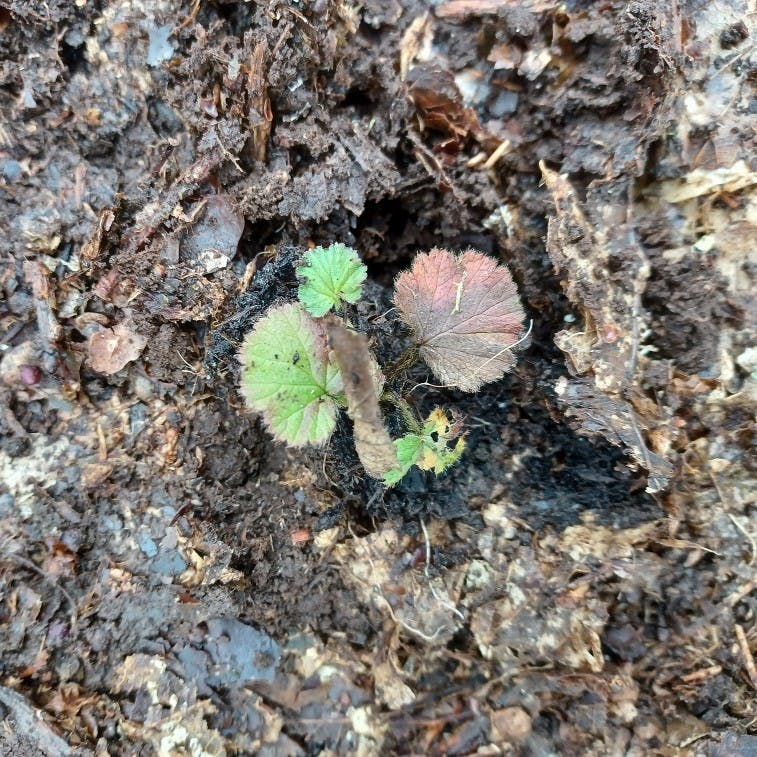
Wardlaw Wood, Dalry Community Windfarm
Wardlaw Wood, a 7 hectare hill ground located north-west of Dalry in North Ayrshire, has experienced various intensive land uses in its recent history that have severely affected its floral species.
Currently in the ownership of Community Windpower, the land was previously open hill used for sheep grazing before becoming a conifer plantation. This plantation was felled when the wind farm was built and in 2014/15, Eadha planted 9,000 native trees to restore the woodlands. Although free roaming sheep are fenced off the land, roe deer living in the adjacent conifer plantation can access the site. This has created a problem as the population of deer heavily browse the trees as they grow out of their protective guards. This is stalling the growth of the trees and inhibiting their development to maturity.

Our Intervention
To tackle this problem, with the help of our members, we are funding the planting of 1,000 gorse and 200 blackthorn in clumps around existing trees. Both species are thorny shrubs that can act as a natural deterrent and defence against deer browsing. This method of protecting palatable trees is based on the age-old saying “the thorn is the mother of the oak”. Similar co-planting trials of this plastic-free method have been successfully done by Eadha using gorse and aspen (the most palatable tree species) which we hope to replicate the results at Wardlaw Wood, Dalry Community Windfarm. We are also trialling a similar method, using native hawthorn, to support the natural regeneration of aspen as part of our aspen restoration project in the Highlands.
To further enhance the restoration of the woodland’s understory, our funding will enable enrichment planting of a wide variety of understory shrubs and wildflowers. We will be planting common woodland plants such as Greater Woodrush, Wood Sorrel, Primrose, Bog Myrtle, Dog Violet, Lesser Stitchwort, Devil’s Bit Scabious, and Slender St John’s Wort.
We will also contribute to the wider rewilding objectives of creating a rich woodland in terms of diversity of tree species by supporting the planting of 25 native trees. Again, these include species of high conservation value such as Sessile Oak, Juniper, Rock Whitebeam. We will also be planting Arran Whitebeam and Arran Service Tree, trees which are normally endemic to the isle of Arran, to support the long-term survival of these species.
Through these interventions we aim to not only improve the diversity of species benefiting from this habitat, but also to enable the ecosystem to eventually become self-regulating. The longer-term goal will also include reintroducing other missing native tree and plant species.
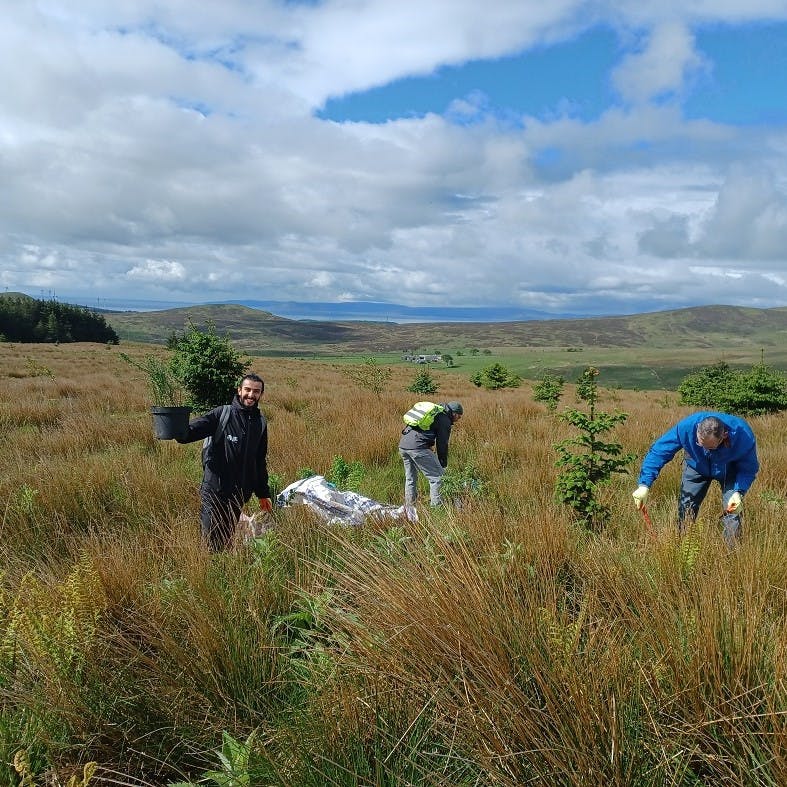

Autumn - Winter 2024/25 planting
The community at Locherwoods getting involved our efforts to create a thriving understory layer of the woods.

A Healthy Woodland Understory
Here is a selection of wonderful wildflowers that can flourish if a woodland has a healthy understory.










